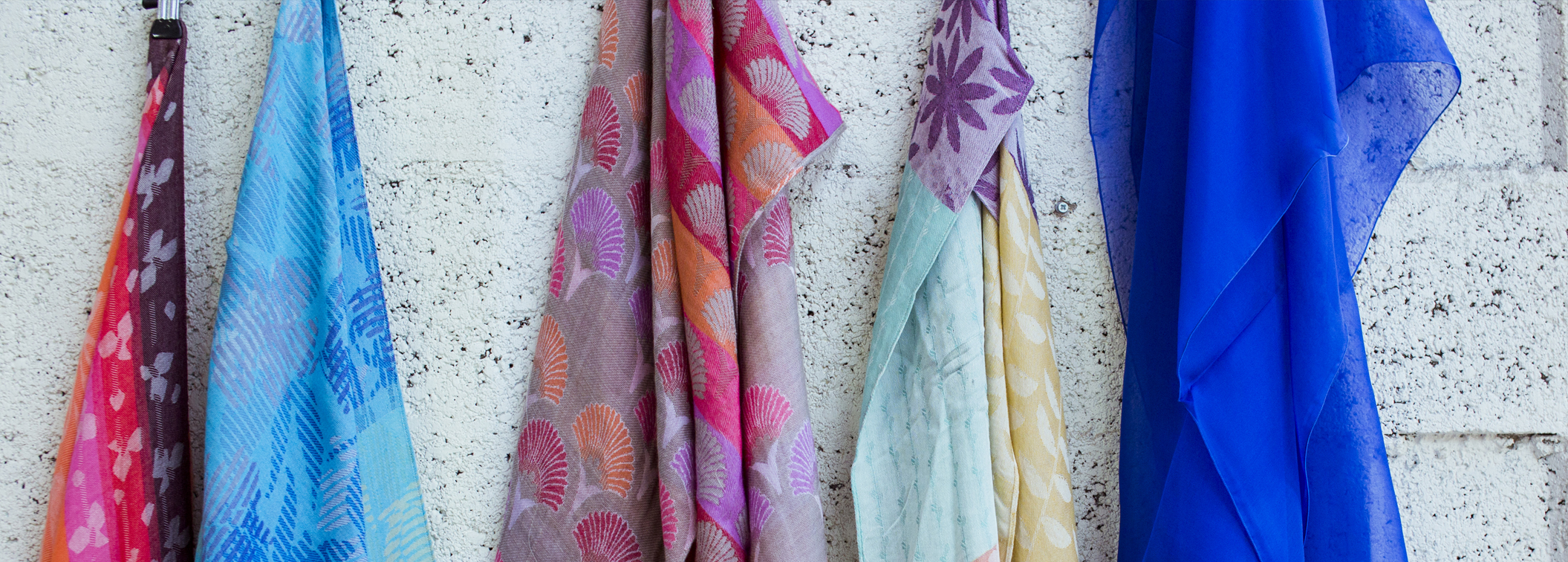Cheiche, foulard, scarf, stole, shawl: What’s the difference?
How can you tell the difference between a scarf, a foulard, and a stole? Here, French scarf will explain everything you need to know!
Scarves have many different names because they have different uses, different materials, and different shapes and sizes. How can you tell them apart and what are their special characteristics? How can you choose the right product for you? What is the right name for each kind of scarf? Many customers contact us, saying they can’t tell the difference between a cheiche, scarf, stole, shawl, and foulard. Today, with our years of experience, we will answer this important question.
With several generations of expert artisans making scarves in our family, we know there are four important criteria to consider here:
-Shape and dimensions
-Material
-Intended use
-How it’s worn
The Scarf
The word “scarf” is the generic term which can refer to a scarf, a cheiche, a stole, a shawl, or a snood. However, what sets a scarf apart compared to other accessories as a technical term are mainly the material and the size of the fabric. A scarf will be made with a fairly thick, dense fabric, like pure wool or a wool and silk or wool and cotton blend. Additionally, a scarf is always rectangular with a width ranging from 40-70 cm (15.75-27.50 in) and a length ranging from 150-180 cm (59-71 in). A scarf is meant to keep you warm and is therefore intended for winter. This includes large scarves meant to be worn with sporty or casual outfits, over a jacket, but also to bring an elegant touch to a coat. Scarves are for both men and women. For example, Fabrique d’écharpe has the Impulsion scarf, which is great to wear over a coat.
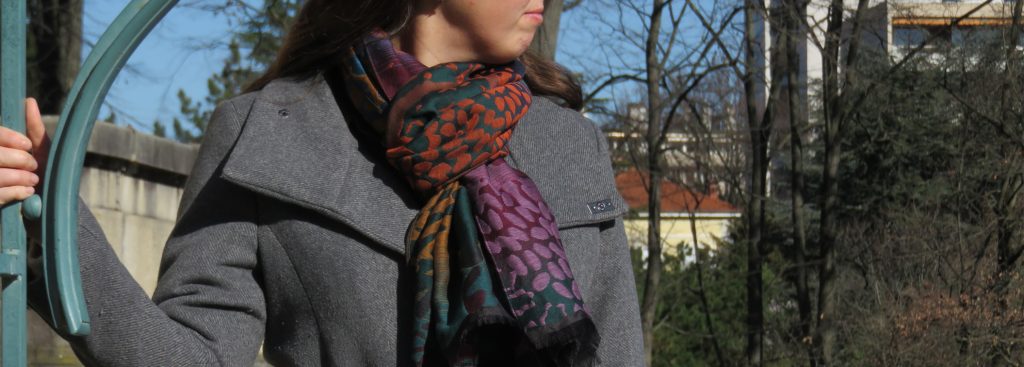
Scarves are also characterized by their visible fringe at the ends. Scarves are most often worn doubled around the neck (as in the photo above), or with a single knot in the front. A distinction is made between knit scarves, with printed patterns, and “Jacquard” patterns, meaning the pattern is woven with colored threads by interweaving. The Jaennette scarf below is a fine example of the Jacquard technique.
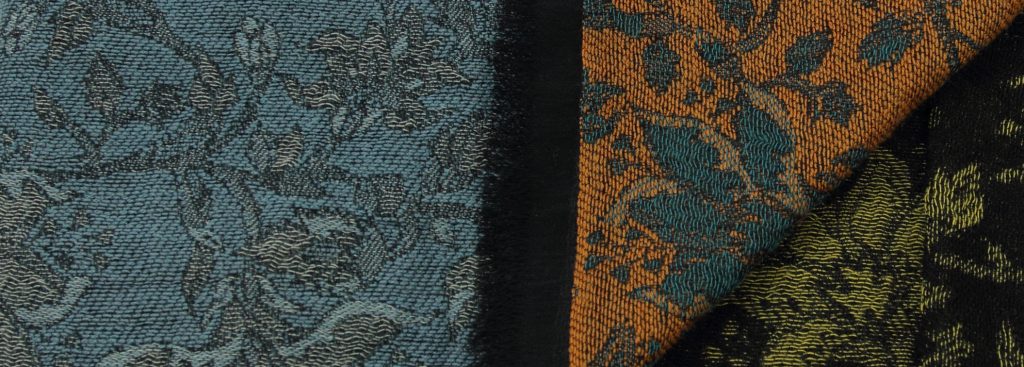
Traditional Jacquard weaving is our Lyon workshop’s specialty. It is also emblematic of the Lyon silk industry in general. Jacquard scarves can be recognized by their rich yet subtle designs and colors. They are also marked by their use of relief and specific materials.
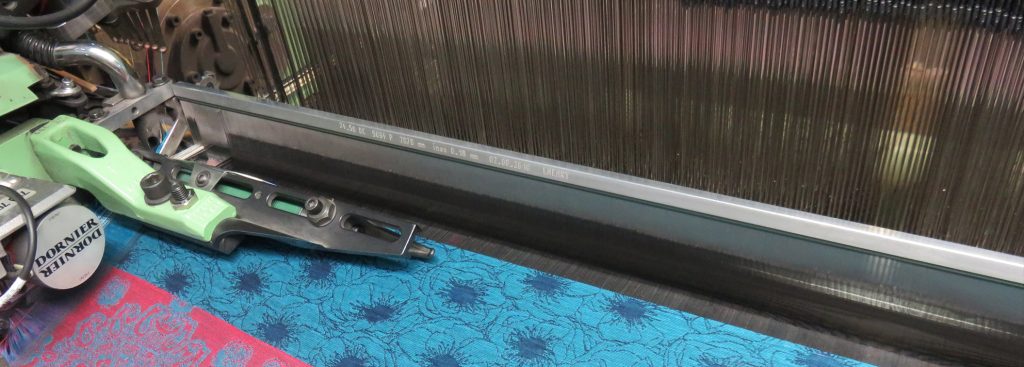
The Foulard
The difference between a foulard and other accessories is primarily the material. A foulard is made of thiner, more light-weight material like silk or very fine cotton. Thus, properly speaking, we can talk about a cashmere foulard and not a cashmere scarf because the material is light-weight even if it is technically wool. A foulard also usually has smaller dimensions than a scarf and is generally rectangular, between 40×120 cm (15.75×47.24 in) up to 60×200 cm (23.62×78.74 in). Since foulards are made of silk or thin cotton, they are not particularly warm and are usually worn in spring or autumn. They are meant to be tied very simply around the neck because they are fluid and thin. Foulards are worn because they are very colorful, for example our monochrome silk foulards in a large range of colors:
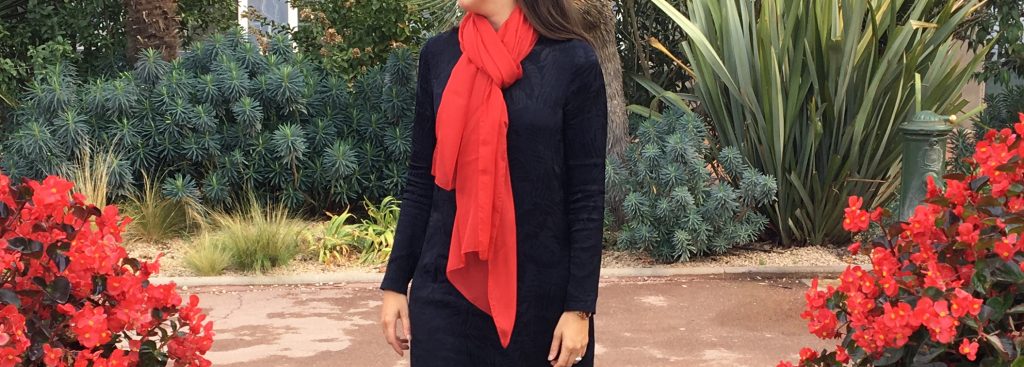
People also choose foulards for their very marked and original printed patterns like our silk duos. These mainly worn with formal dresses or suits for women, or inside the shirt collar for men.
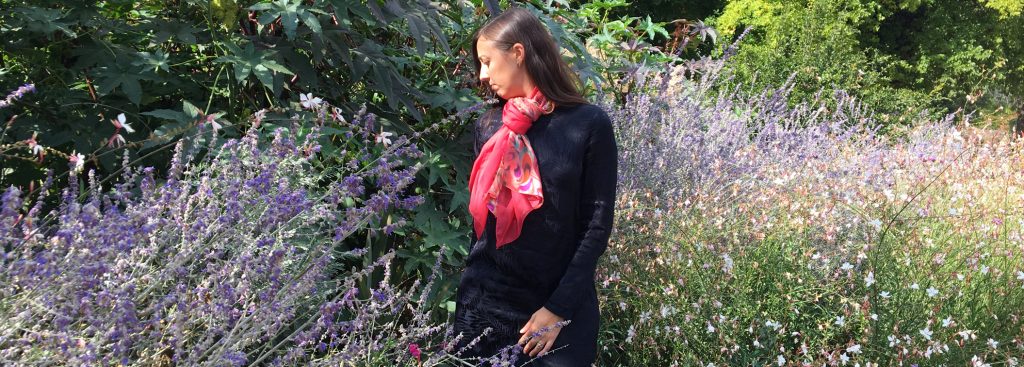
Foulards are always part of the Spring-Summer collection and are an essential in every wardrobe.
The Stole
A stole could also just be called a large scarf, ranging from 70×180 cm (27.55×70.86 in) up to 90×190 cm (35.43×74.80 in). The word stole is also used for large scarves made of more luxurious materials like cashmere or yak wool, or for fabric blends made with primarily silk.
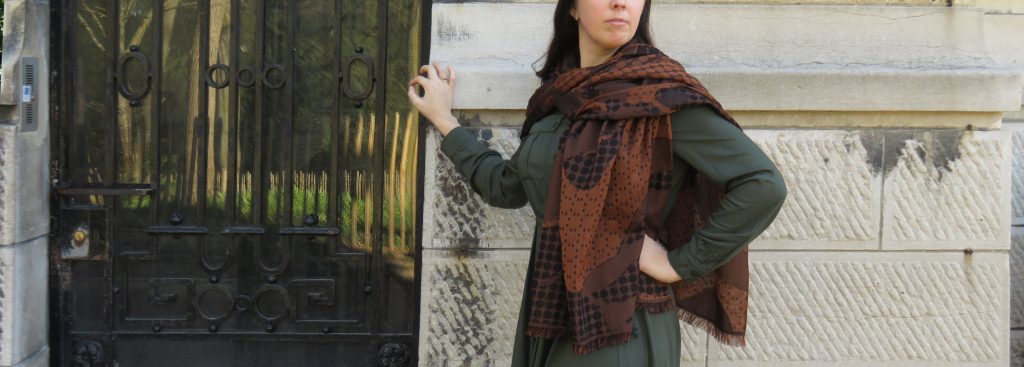
You can also tell a stole by the way it is worn: draped over the shoulders or wrapped up like a shawl. However, you can also a stole like a scar when it is particularly cold and you want to keep a good thickness of fabric around your neck. A stole is also a wider scarf made of more voluminous, light-weight material, which is to be worn over your shoulders for special occasions, weddings, baptisms, or at evening parties with cocktail dresses.
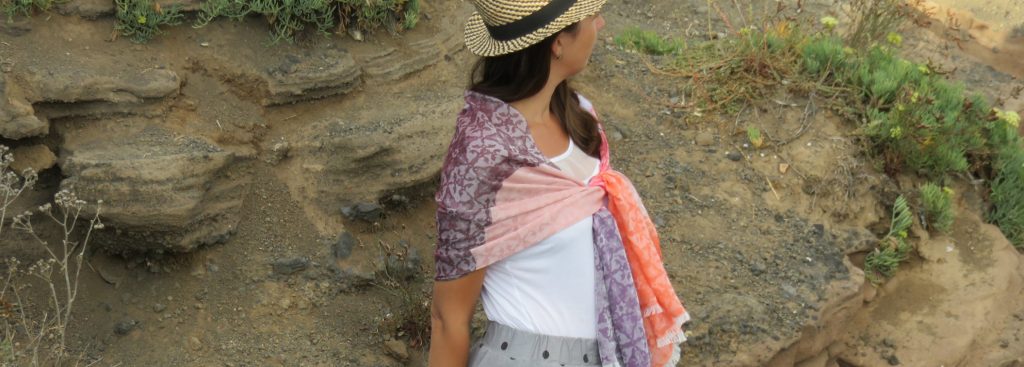
The Shawl
What sets a shawl apart is its size, which is even bigger than a stole. A shawl is the largest type of scarf, being as much as 1×2 m (3.28×6.56 ft), and it can be square like our Prestige shawl, which measures 140×140 cm (4.6×4.6 ft). A shawl is very effective in battling the cold because of its large size its generally wooly, thick composition. Generally, shawls are 100% wool or a wool-heavy blend. Shawls can be worn wrapped around your neck, or thrown over your shoulders like a poncho. Since it is particularly warm, a shawl is an essential for fall and winter!
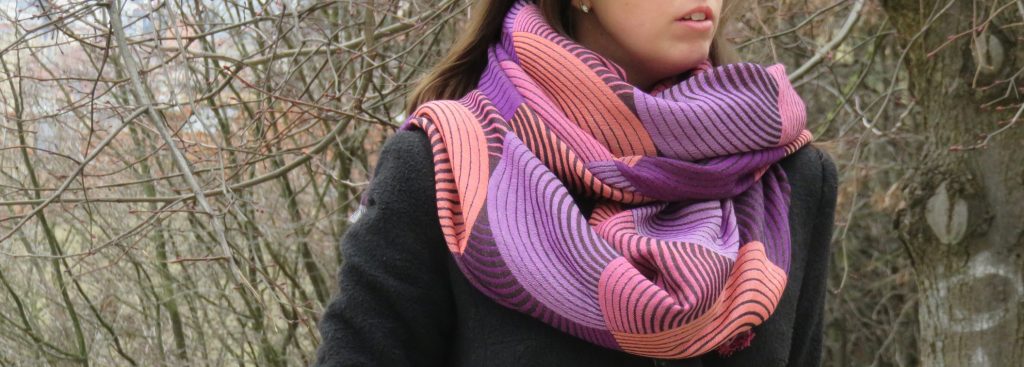
A shawl can be woven in one color in any number of hues, but also with printed or Jacquard patterns. Often, a shawl has a very large design that is not repeated. It is also characterized by its fringes on all four sides, though this is not mandatory. Thanks to the richness of its pattern, you can also use a shawl as a decoration in your home, thrown over the couch.
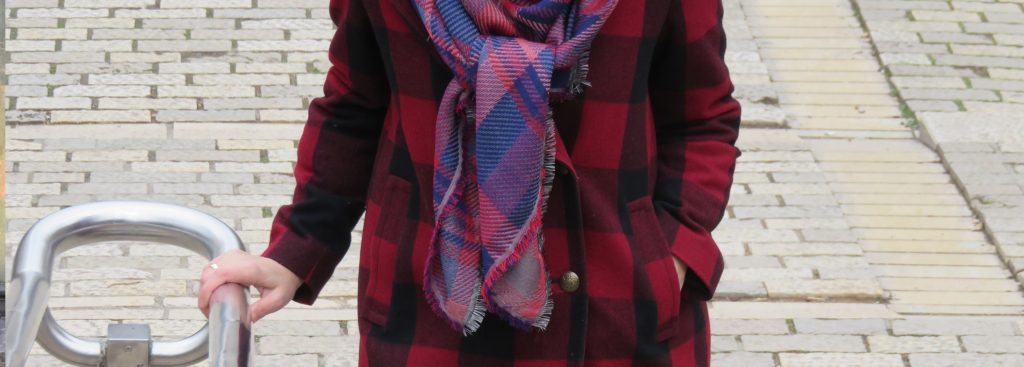
The Square
Obviously, a square is a square-shaped scarves, but also it generally refers to a piece made of silk or imitation silk (like viscose or polyester). We also make a distinction between the large classic printed squares, which are 100% silk and measure 90×90 cm (2.95×2.95 ft) and were best-sellers in the 1980s, when every luxury brand created its own original patterns, and the small printed squares which are 100% silk satin and measure 65x65cm (2.09×2.09 ft) which tie very easily and add a feminine, colorful touch to your outfits. Squares can be worn in all seasons, and quickly become essential to your wardrobe, enhancing any of your outfits. A timeless fashion accessory.
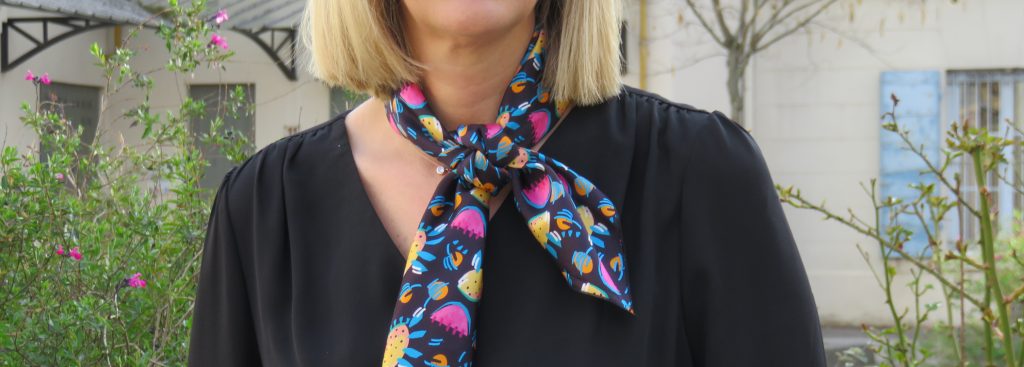
The Cheiche
To really understand the differences between a cheiche and a regular scarf, you have to know its origin. If you look it up on Wikipedia (also known by the names litham and tagelmust), you will find this definition: “an indigo-dyed cotton scarf, with the appearance of both a veil and a turban. The cloth may exceed 10 metres (33 ft) in length. It is mostly worn by Touareg Berber men, the Hausa of the far northern Sahel region, and the Songhai…and serves as protection from the dust and extremes of temperature characterizing the desert environment.” Its primary function is to protect the face from the sun. Today, the word cheiche applies to a scarf made of light-weight fabric that is meant to be is worn in summer to protect you from the sun. The main difference between a cheiche and other scarves is its material: a cheiche is by definition 100% cotton or sometimes a cotton-majority blend. Cotton is a material that does not trap heat and is very pleasant to wear in spring and summer and even in hot weather. Pick a cheiche that enhances your summer outfits and adds more casual style. Men will appreciate that is a very practical scarf, easy to maintain, even if it is wrinkled or worn-in, is perfect for casual, relaxed styles. Our Boundary model is a perfect example of a soft, stylish cotton cheiche!
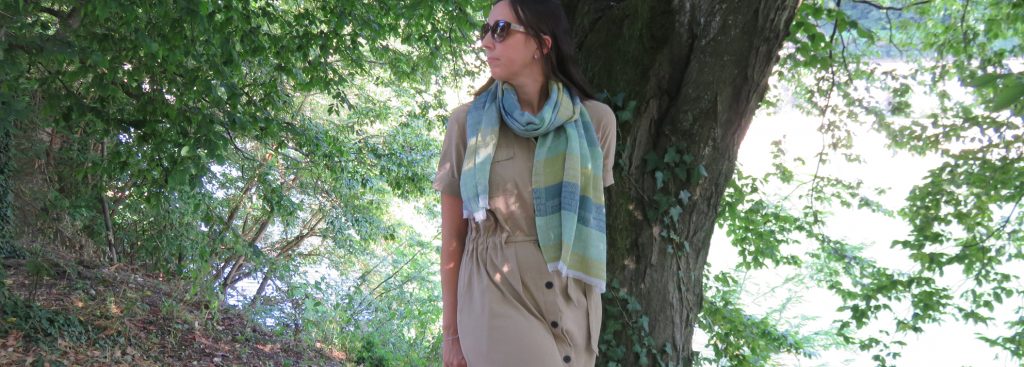
The Snood
A snood is scarf that is circular, like a tube that you put over your head, the difference is just the shape of the scarf. A snood can be made of any material, but as it was created to be close to the neck and keep you warm. Usually snoods are both elastic, to make them easier to wear, and made of woolen materials for their thermal properties. Knit fabrics are well suited for snoods to make them warmer, or warp and weft woven fabrics where an elastic thread is included. However, the term can also refer to an infinity scarf, or a scarf worn in the infinity style where a regular scarf is wrapped with several turns around the neck to give the appearance of being circular. Snoods are worn in very cold weather, on coats or jackets, for women as well as for men. Snoods are ideal for outdoor sports, since there is no flap that could hinder movement, and for the same reasons, we recommend it for bikers. Likewise, the snood is perfect for children.

In short, the differences between a scarf, foulard, stole, cheiche, and snood are very subtle, and it can be very difficult to distinguish between them. We have tried to shed light on this subject as much as we can, using our professional experience and mastery of materials, forms, and dimensions in scarf making. You can find the full range of our scarves, all made in France, on our website, all you have to do is choose the accessory that fits your needs!

Write to us





